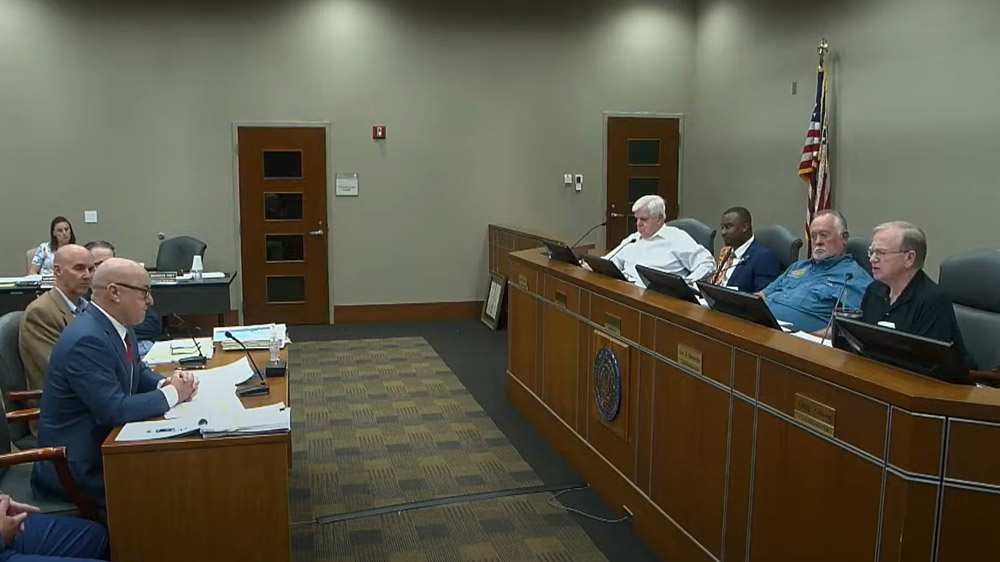CARMEL, Ind. — MISO’s $25 billion, mostly 765-kV long-range transmission package for the Midwest region is nearing finalization, while the Independent Market Monitor continues to doubt the necessity of the projects.
The Monitor is penning a memo spelling out his concerns with MISO’s assumptions behind its long-range transmission planning.
Despite that, the lines are advancing to MISO’s business case testing, where they will be analyzed against its nine benefit metrics. MISO will release the business case for the portfolio in September.
“The benefits metrics process has been well reviewed,” Executive Director of Transmission Planning Laura Rauch told the Organization of MISO States’ board of directors July 16. She said MISO solicited extensive stakeholder feedback and is “fairly comfortable” with the metrics it is advancing.
Rauch said MISO will hold multiple workshops with stakeholders to go over the business case for the new batch of LRTP lines.
“We’re at the stage, using an airplane analogy, where we’ve landed and we’re on the tarmac,” Director of Economic and Policy Planning Christina Drake told stakeholders on a July 17 teleconference.
MISO has yet to factor in the cost of underbuild projects into the second LRTP portfolio.
Drake said MISO’s first, $10 billion LRTP portfolio in MISO Midwest minimized the need for underbuild projects to support the second portfolio. MISO uses the term “underbuild” for the secondary, lower-voltage transmission upgrades necessary to support a 765-kV network in the Midwest region without worsening existing constraints.
While MISO considers its benefit metrics a done deal, the Monitor still harbors serious concerns over the metrics and says two should be outright deleted. (See MISO IMM Knocks LRTP Benefit Calculations; RTO Poised to Add More Projects.)
This month, IMM David Patton said he scheduled meetings with MISO planners to outline his concerns with the metrics, though he acknowledged little progress on a compromise.
“I don’t think the MISO board understands how serious these concerns are,” Patton told the Board of Directors’ Markets Committee on July 11. “We haven’t seen a lot of movement to address either the concerns on the [second transmission future] — which we view as very unrealistic — or MISO’s benefits process.”
Patton said he remains hopeful MISO is open to altering its project portfolio to assemble the “most least-regrets” collection of transmission projects.
He called MISO’s second transmission planning future “completely inconsistent” with its new, availability-based capacity accreditation and its invitation for members to develop resources with more steadfast attributes.
MISO is using its second transmission planning future as a basis for this LRTP portfolio. It assumes that by 2042, the RTO will manage 466 GW of installed capacity with a fleet that emits 96% less carbon pollution than it did in 2005 and have a 145-GW peak load that occurs in January rather than July.
Patton said MISO’s goal of least-regrets transmission planning is possible only when it uses “valid benefit metrics and explores the gamut of possible futures.”
MISO has proposed using nine benefit metrics to establish a benefit-to-cost case for the portfolio, including avoided capacity costs, capacity savings from reduced line losses, congestion and fuel savings, reduced transmission outage costs, energy savings from reduced losses, lower risks during extreme weather, mitigation of reliability issues, avoided transmission investment and decarbonization.
Patton has said it’s not appropriate for MISO to place a value on decarbonization when the government already does through tax credits. He also has said the RTO should not presume the lines will save members money on additional capacity that otherwise would have to be built.
At the workshop, MISO was adamant the second LRTP portfolio will accommodate Midwest members’ fleet transition plans and load growth.
MISO said on a 20-year horizon, the Midwest also should see $3.2 billion in adjusted production cost savings, an 8.5% (20.4 million MWh) reduction in curtailment, savings to the cost of serving load and decreased price separation. The RTO also said LRTP II resolves 60% of the Midwest’s 200-kV and above constraints that could trigger contingencies and more than 70% of thermal violations for all voltage levels.
Xcel Energy’s Drew Siebenaler said his utility’s ambitions now more closely resemble MISO’s third, 20-year transmission planning future, not the second. He asked whether MISO would test the second LRTP portfolio against its most aggressive, third planning future, as rapid load growth and fleet transformation have made it appear the most probable.
Drake said MISO remains committed to testing the second portfolio against the “low-end bookend” and using the second transmission planning future. But the RTO is aware the portfolio will not enable all the generation contemplated in the future. She said that’s why MISO will pursue a companion portfolio next year, with proposed lines likely popping up in the western portion of MISO Midwest.
La. and Miss. Regulators Open Offensive Against Order 1920
Meanwhile, Louisiana and Mississippi state regulators have called on the 5th U.S. Circuit Court of Appeals to examine FERC’s recent landmark transmission planning rule.
Attorneys for the Louisiana Public Service Commission and Mississippi Public Service Commission filed a petition for review July 15 of FERC’s Order 1920 (24-60355).
Both state commissions claimed they are “aggrieved” by the order, which requires transmission providers to conduct transmission planning on 20-year horizons every five years.
Former FERC Commissioner Allison Clements has said the commission used MISO’s existing planning as a model for portions of the wide-ranging transmission planning rule. (See MARC 2024 Displays Mixed Feelings on Transition Feasibility.)
Louisiana and Mississippi, both part of MISO’s South region, have not been the focus of MISO’s LRTP planning efforts yet. The RTO so far has proposed only multibillion-dollar LRTP portfolios for its Midwest region. MISO, clean energy groups, MISO South state regulators and Entergy disagree over how LRTP cost allocation should be handled in the South. (See related story, Clean Energy Orgs Push Entergy Players to Consider Broader Cost Allocation.)




